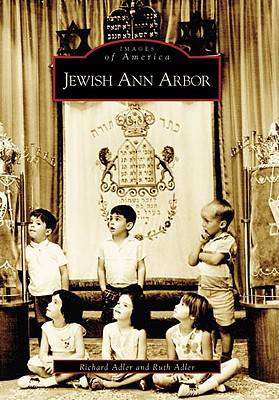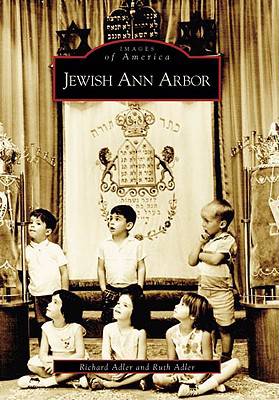
- Afhalen na 1 uur in een winkel met voorraad
- Gratis thuislevering in België vanaf € 30
- Ruim aanbod met 7 miljoen producten
- Afhalen na 1 uur in een winkel met voorraad
- Gratis thuislevering in België vanaf € 30
- Ruim aanbod met 7 miljoen producten
Zoeken
€ 30,95
+ 61 punten
Uitvoering
Omschrijving
The earliest Jewish settlers arrived in Michigan during the mid-18th century. Primarily traders associated with the burgeoning fur industry, few of these entrepreneurs remained permanently. During the early 1840s, the five Weil
brothers, farmers and tanners from Germany, became the first prominent Jewish settlers in Washtenaw County. By the end of that decade, a Jewish cemetery was established on what is now the site of the Horace Rackham Building on the University of Michigan campus. Though the Weil family
eventually moved west, the cemetery remained as a marker for what was then a miniscule Jewish presence. In the early 20th century, Osias Zwerdling and the Lansky family arrived. In addition to reestablishing a Jewish presence in Ann Arbor, they helped form what became Beth Israel Congregation. Growth of the Ann Arbor Jewish community coincided with the evolution of the university, as well as the city. By the end of the 20th century, a vibrant community representing all facets of Judaism had been established.
brothers, farmers and tanners from Germany, became the first prominent Jewish settlers in Washtenaw County. By the end of that decade, a Jewish cemetery was established on what is now the site of the Horace Rackham Building on the University of Michigan campus. Though the Weil family
eventually moved west, the cemetery remained as a marker for what was then a miniscule Jewish presence. In the early 20th century, Osias Zwerdling and the Lansky family arrived. In addition to reestablishing a Jewish presence in Ann Arbor, they helped form what became Beth Israel Congregation. Growth of the Ann Arbor Jewish community coincided with the evolution of the university, as well as the city. By the end of the 20th century, a vibrant community representing all facets of Judaism had been established.
Specificaties
Betrokkenen
- Auteur(s):
- Uitgeverij:
Inhoud
- Aantal bladzijden:
- 128
- Taal:
- Engels
- Reeks:
Eigenschappen
- Productcode (EAN):
- 9780738540214
- Verschijningsdatum:
- 31/05/2006
- Uitvoering:
- Paperback
- Formaat:
- Trade paperback (VS)
- Afmetingen:
- 168 mm x 237 mm
- Gewicht:
- 322 g

Alleen bij Standaard Boekhandel
+ 61 punten op je klantenkaart van Standaard Boekhandel
Beoordelingen
We publiceren alleen reviews die voldoen aan de voorwaarden voor reviews. Bekijk onze voorwaarden voor reviews.











